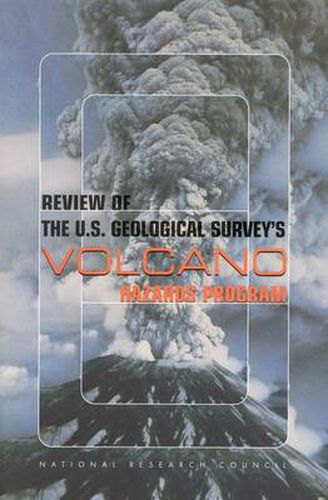Readings Newsletter
Become a Readings Member to make your shopping experience even easier.
Sign in or sign up for free!
You’re not far away from qualifying for FREE standard shipping within Australia
You’ve qualified for FREE standard shipping within Australia
The cart is loading…






The United States has more than 65 active or potentially active volcanoes, more than those of all other countries except Indonesia and Japan. During the twentieth century, volcanic eruptions in Alaska, California, Hawaii, and Washington devastated thousands of square kilometers of land, caused substantial economic and societal disruption and, in some instances, loss of life. More than 50 U.S. volcanoes have erupted one or more times in the past 200 years. Recently, there have been major advances in our understanding of how volcanoes work. This is partly because of detailed studies of eruptions and partly because of advances in global communications, remote sensing, and interdisciplinary cooperation.
The mission of the Volcano Hazards Program (VHP) is to lessen the harmful impacts of volcanic activity by monitoring active and potentially active volcanoes, assessing their hazards, responding to volcanic crises, and conducting research on how volcanoes work. To provide a fresh perspective and guidance to the VHP about the future of the program, the Geologic and Water Resources Divisions of the United States Geological Survey (USGS) requested that the National Research Council conduct an independent and comprehensive review.
Review of the U. S. Geological Survey’s Volcano Hazards Program is organized around the three components of hazards mitigation. Chapter 2 deals with research and hazard assessment. Chapter 3 covers monitoring and Chapter 4 discusses crisis response and other forms of outreach conducted by the VHP. Chapter 5 describes various cross-cutting programmatic issues such as staffing levels, data formats, and partnerships. Chapter 6 offers a vision for the future of the Volcano Hazards Program, and Chapter 7 summarizes the conclusions and recommendations of the preceding chapters. Throughout the report, major conclusions are printed in italics and recommendations in bold type.
The committee has written this report for several different audiences. The main audience is upper management within the USGS and the VHP. However, the committee believes that scientists within the VHP will also find the report valuable. The report is written in such a manner as to be useful to congressional staff as well.
$9.00 standard shipping within Australia
FREE standard shipping within Australia for orders over $100.00
Express & International shipping calculated at checkout
The United States has more than 65 active or potentially active volcanoes, more than those of all other countries except Indonesia and Japan. During the twentieth century, volcanic eruptions in Alaska, California, Hawaii, and Washington devastated thousands of square kilometers of land, caused substantial economic and societal disruption and, in some instances, loss of life. More than 50 U.S. volcanoes have erupted one or more times in the past 200 years. Recently, there have been major advances in our understanding of how volcanoes work. This is partly because of detailed studies of eruptions and partly because of advances in global communications, remote sensing, and interdisciplinary cooperation.
The mission of the Volcano Hazards Program (VHP) is to lessen the harmful impacts of volcanic activity by monitoring active and potentially active volcanoes, assessing their hazards, responding to volcanic crises, and conducting research on how volcanoes work. To provide a fresh perspective and guidance to the VHP about the future of the program, the Geologic and Water Resources Divisions of the United States Geological Survey (USGS) requested that the National Research Council conduct an independent and comprehensive review.
Review of the U. S. Geological Survey’s Volcano Hazards Program is organized around the three components of hazards mitigation. Chapter 2 deals with research and hazard assessment. Chapter 3 covers monitoring and Chapter 4 discusses crisis response and other forms of outreach conducted by the VHP. Chapter 5 describes various cross-cutting programmatic issues such as staffing levels, data formats, and partnerships. Chapter 6 offers a vision for the future of the Volcano Hazards Program, and Chapter 7 summarizes the conclusions and recommendations of the preceding chapters. Throughout the report, major conclusions are printed in italics and recommendations in bold type.
The committee has written this report for several different audiences. The main audience is upper management within the USGS and the VHP. However, the committee believes that scientists within the VHP will also find the report valuable. The report is written in such a manner as to be useful to congressional staff as well.